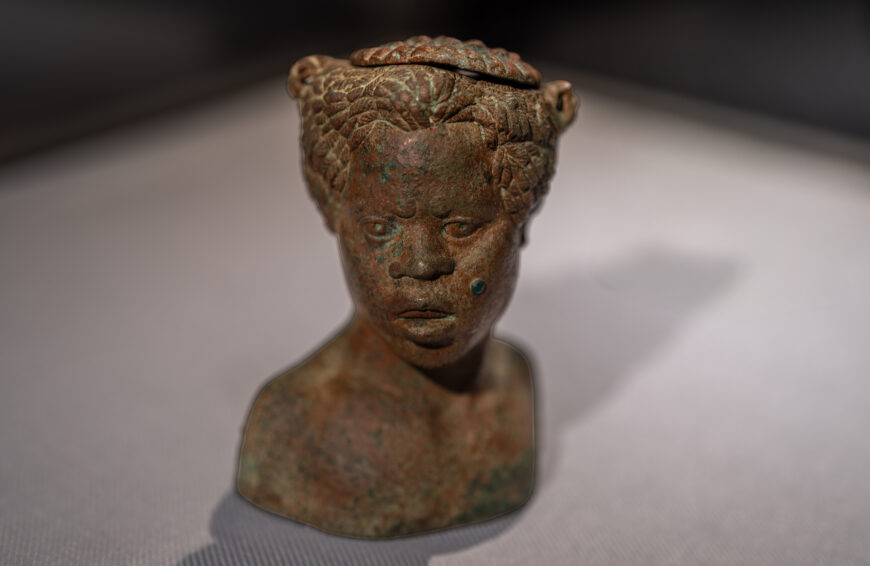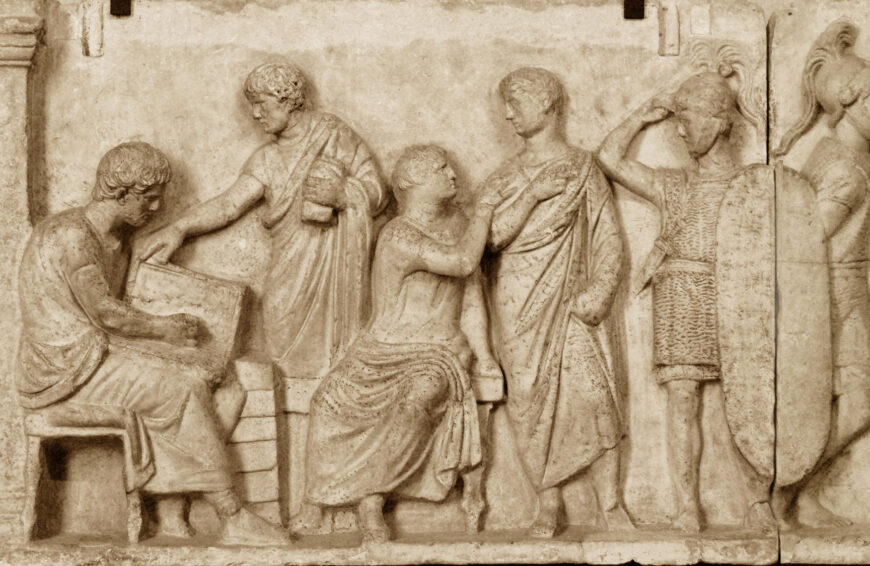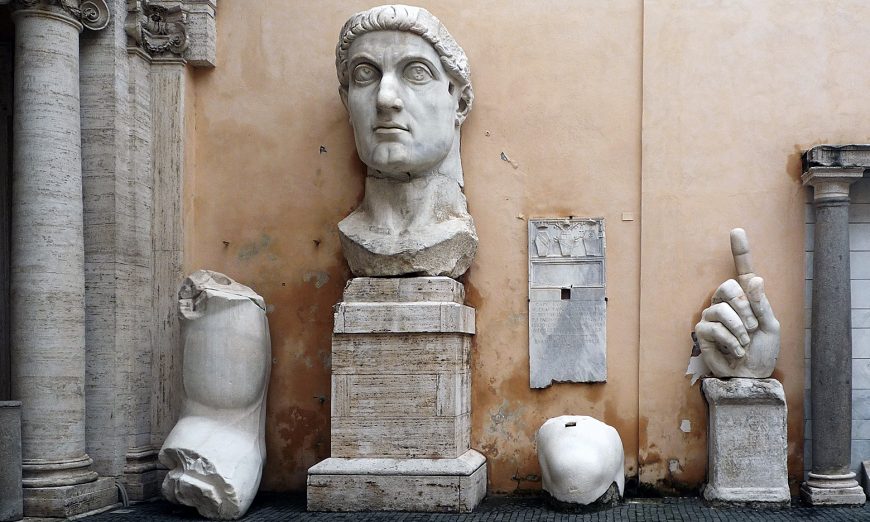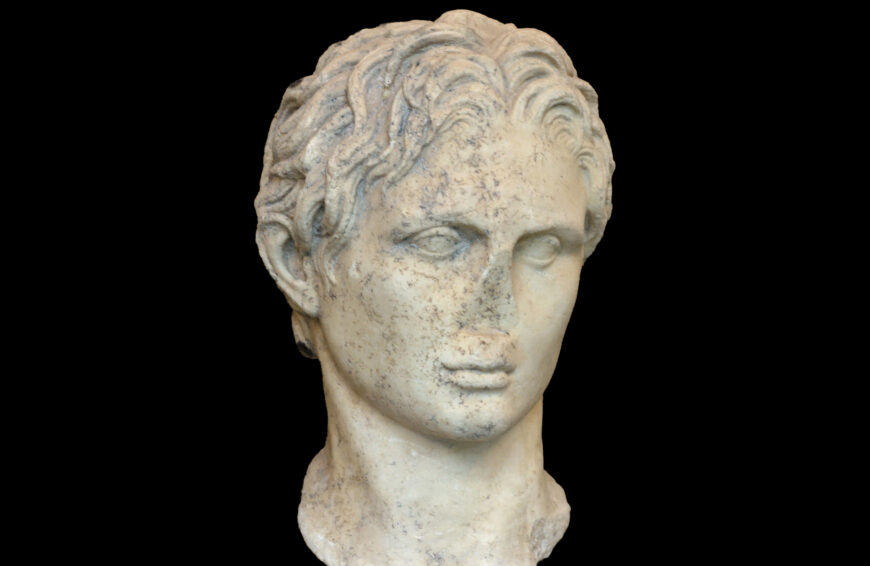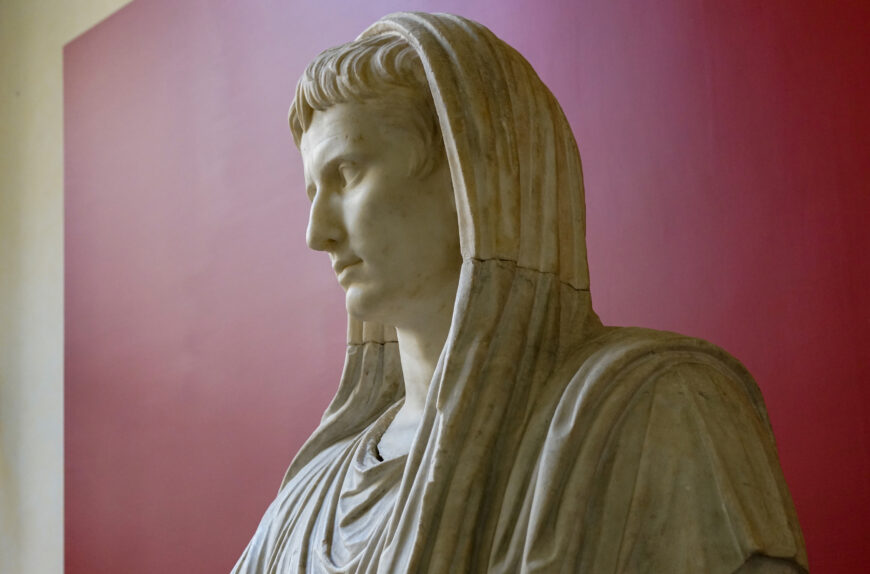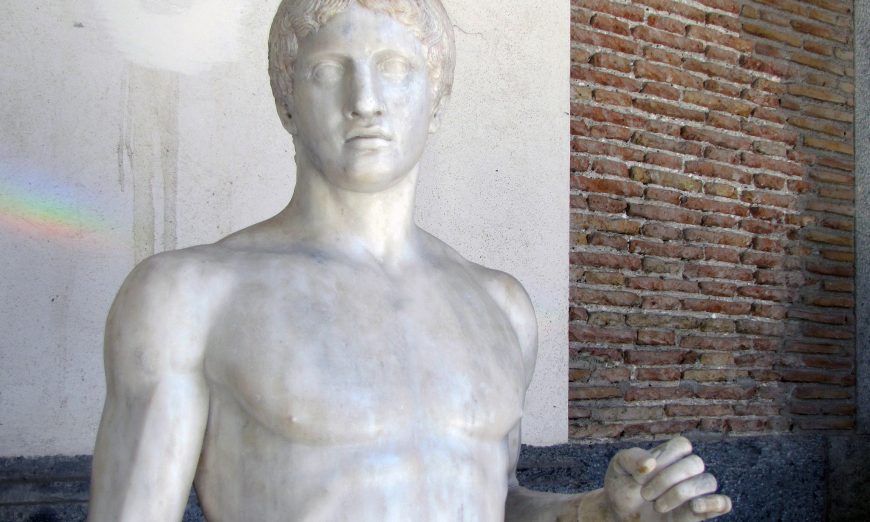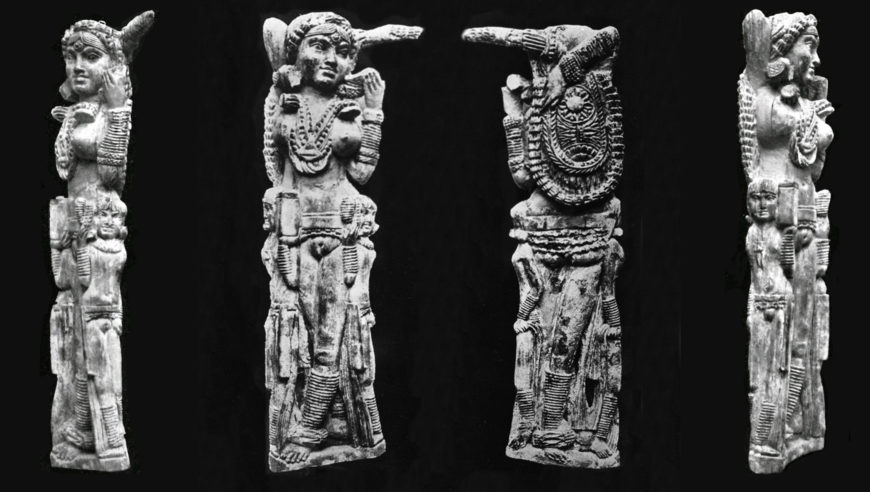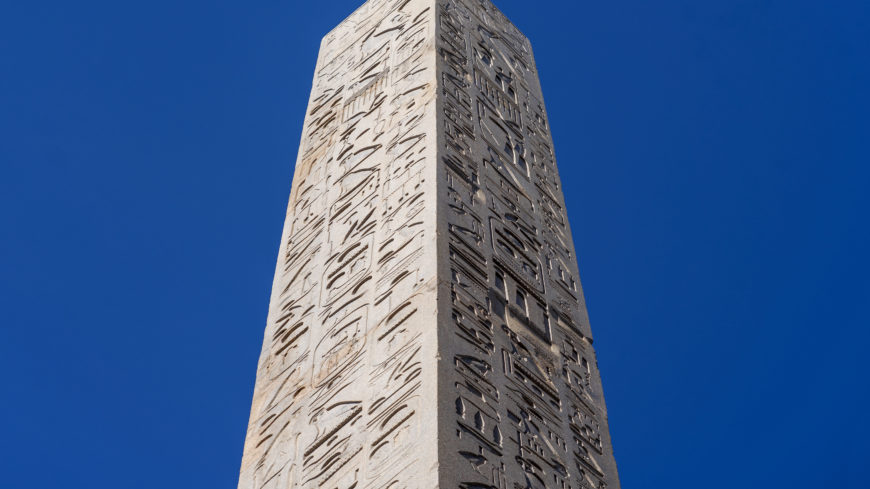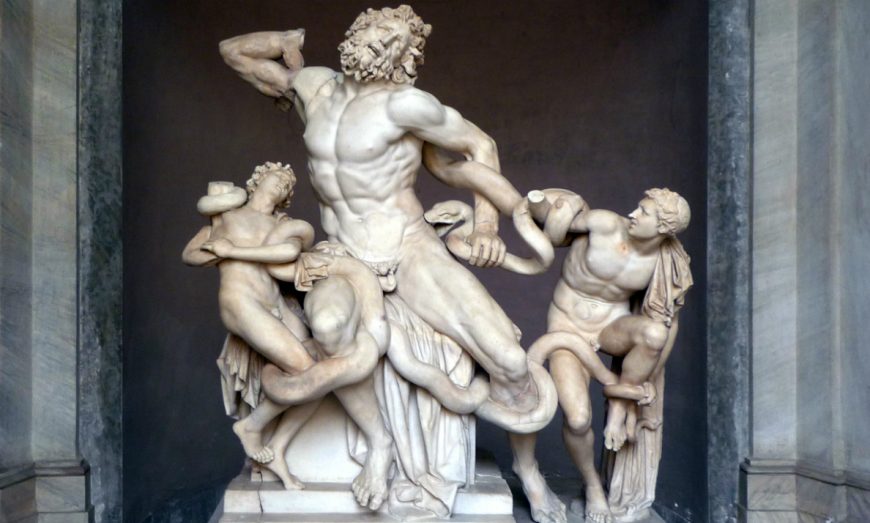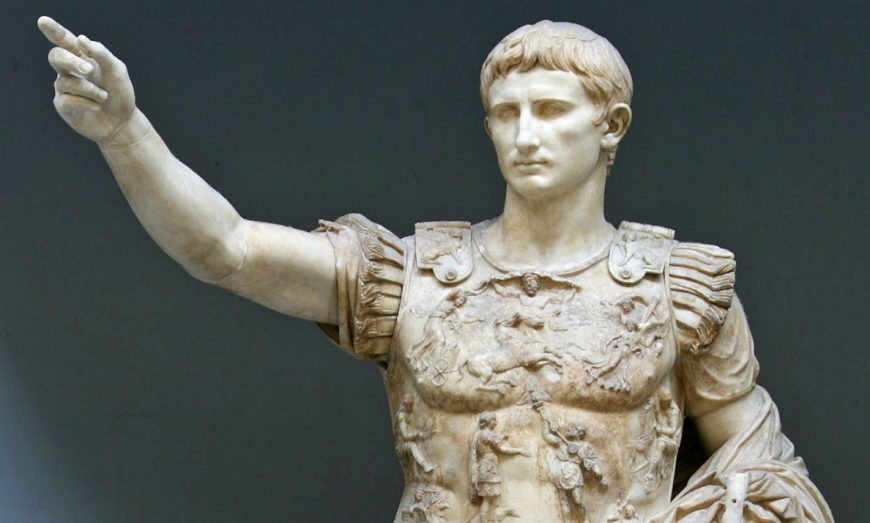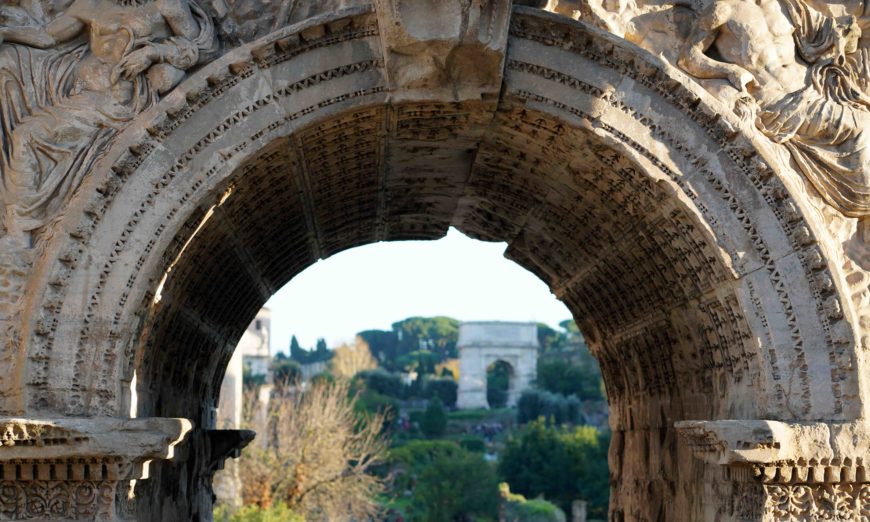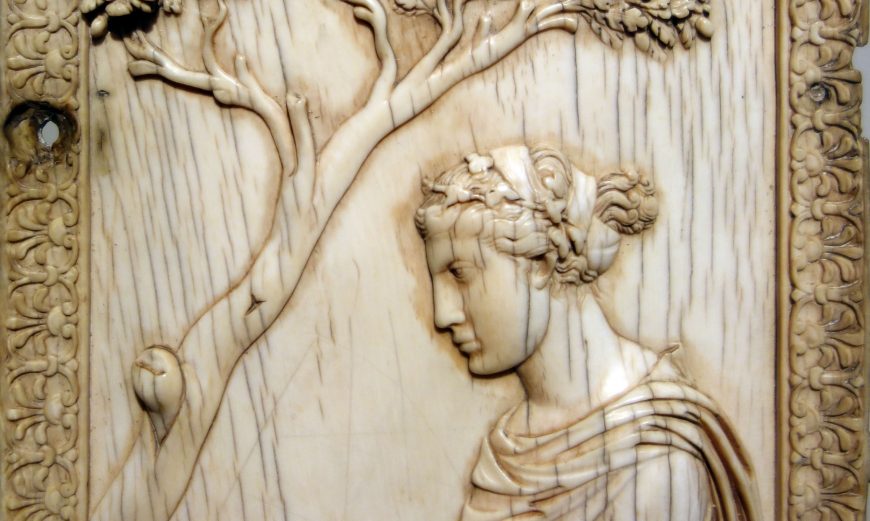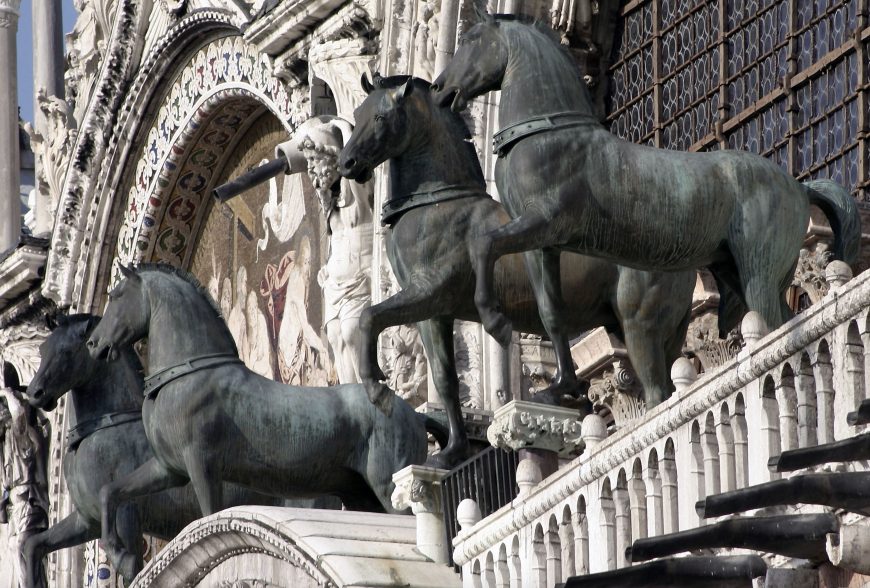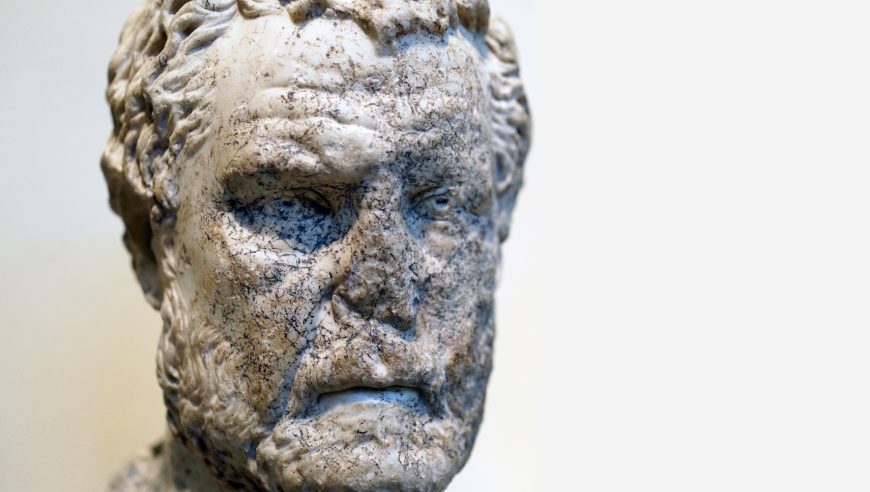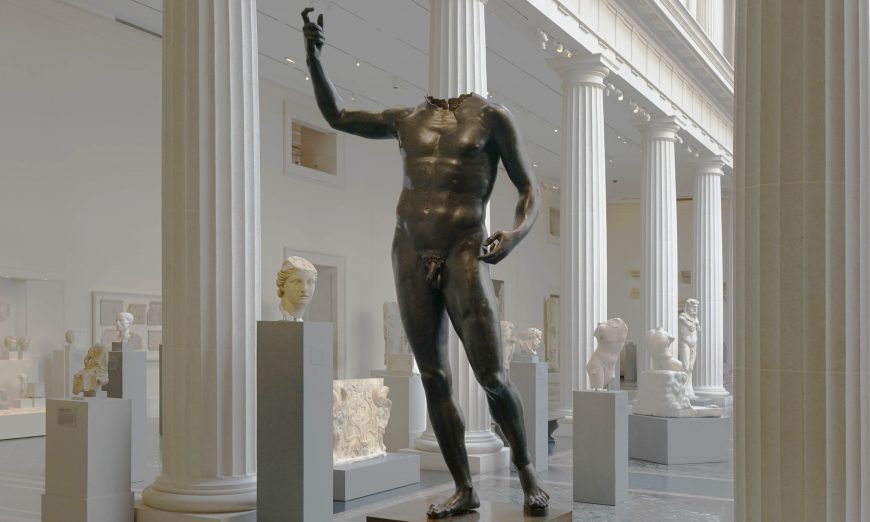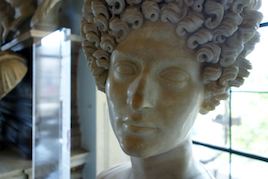Once identified as the founder of the Roman Republic, debate over this figure’s true identity rages on.
Capitoline Brutus, 4th–3rd century B.C.E. bronze, 69 cm (Capitoline Museums, Rome)
[0:00] [music]
Dr. Steven Zucker: [0:04] We’re in the Capitoline Museum in Rome. We’re looking at a portrait bust, or maybe I should say just a portrait head, that is known as “Brutus.”
Dr. Beth Harris: [0:14] It’s complicated, because the way that we see him, he’s part of a bust. That was a very typical Roman form of portrait, to put a head on shoulders and the top of the torso. In fact, the only part of this that’s original is the head.
[0:28] It got the name that it’s currently known by, “Brutus,” in the 16th century, when they imagined that this was Brutus, who was the first leader of the ancient Roman Republic.
Dr. Zucker: [0:37] Brutus is a legendary figure. He was the nephew of the last king. According to tradition, he led the revolt against his uncle.
Dr. Harris: [0:45] He’s the founder of the Roman Republic, the man who ousts the last king, the last autocratic ruler, and establishes the rule of the Senate, the rule of the people.
Dr. Zucker: [0:56] Throughout history he is periodically important, whenever there is a push toward a democratic government. For example, in the 18th century, Jacques-Louis David will heroize him. Let’s look at the sculpture.
Dr. Harris: [1:08] Well, it’s really clear when you look closely that the head doesn’t belong to the bust.
Dr. Zucker: [1:12] Well, the head is very finely wrought, whereas the bust is quite coarse. Look at the detail of the mustache, of the beard, of the eyebrows, and then there are those eyes.
Dr. Harris: [1:21] And the eyes are made of painted ivory and they make him look incredibly lifelike. Art historians have noticed how his head inclines downward slightly, and have theorized that perhaps this was part of an equestrian sculpture. That is, a sculpture of a figure on a horse, where he might be like Marcus Aurelius, looking out but down, and addressing his troops.
Dr. Zucker: [1:43] We are lucky that a bronze has survived. Bronze is expensive and can be easily melted down and reused, which is generally what happened.
Dr. Harris: [1:51] There is this interest during the period of the ancient Roman Republic in capturing the specific likenesses of individuals. This is so different than what we are going to see when Augustus becomes the first emperor of Rome, where we get very idealized images.
[2:05] This was likely meant to commemorate an individual. In the 16th century they thought it was Brutus, but we really don’t know who this was, but it makes sense, because we know that the ancient Romans commemorated great political figures, great military leaders.
Dr. Zucker: [2:18] And the statues that the ancient Romans made of those great leaders often lined important ceremonial sites like the Forum, which is just down the hill.
Dr. Harris: [2:27] Our own tradition of commemorating the presidents of the United States, for example, comes from this ancient Roman tradition.
Dr. Zucker: [2:34] There are very particular features, and yet he is also ennobled.
Dr. Harris: [2:38] He is meant to look intelligent, wise, thoughtful.
Dr. Zucker: [2:42] Look how the eyebrows have been stylized just a little bit to almost look like a crown of laurels that wrap around his brow.
Dr. Harris: [2:50] It reminds us that in the ancient Roman Republic, wisdom was something that was seen to come with age. Wisdom was important for political leadership.
Dr. Zucker: [2:59] In fact, the Republic was ruled by the Senate, a council of elders.
Dr. Harris: [3:03] We can see that he’s pushing his brow together. There’s a concern and worry.
Dr. Zucker: [3:08] His jaw is tightly set. His lips are together. There’s a sense of resoluteness.
Dr. Harris: [3:13] Resoluteness in the face of some turmoil. I think it’s those qualities that perhaps led people in the 16th century to associate this with Brutus, someone who was strong and determined and principled.
Dr. Zucker: [3:27] We’ve been reading into this sculpture since at least the 16th century. Here we are continuing to do it today.
[3:33] Although we don’t know who this man is, we understand how distinguished he was and how people must have looked up to him.
[3:39] [music]
Backstory
We know that the Capitoline Brutus was found somewhere in Rome during the sixteenth century, but there is no recorded findspot for this sculpture. In 1564 it was officially bequeathed to the city of Rome by Cardinal Rodolfo Pio da Carpi, an Italian scholar and collector who owned a large trove of ancient artifacts, but there is no known evidence of its original provenance.
In the sixteenth century, at the time of Pio da Carpi’s bequest, this sculpture was already known among antiquarians as Lucius Junius Brutus (who founded the Roman Republic in the 6th century B.C.E.), and this belief continued through the centuries. The bust eventually became a touchstone of revolutionary sentiment: after Napoleon’s invasion of northern Italy in the late 1790s, he staged a triumphal procession across Paris that conspicuously displayed his “art loot” from the campaign. “Rome is no more in Rome. It is now in Paris,” was the chorus of a song that accompanied the march. For Napoleon, the cultural and political meanings associated with ancient Roman art—and particularly the Capitoline Brutus—were key to shoring up his image as the leader of the new capital of Europe. According to art historian Patricia Mainardi, the Brutus was “carried at the end of the march and ceremonially placed on a pedestal before the Altar of the Fatherland,” with a plaque stating “Rome was first governed by kings: / Junius Brutus gave it liberty and the Republic.”
The sculpture was returned to Rome in 1814-15, after Napoleon’s defeat, but its interpretation as the portrait of Brutus lived on. As they did with the Portrait Bust of a Flavian Woman, art historians throughout the nineteenth century debated the identity of the sitter based on its resemblance to other portraits, such as those found on coins. (These objects selected for comparison are called “comparanda.”) However, without a sure archeological findspot, we have no way of knowing who this sculpture actually represents. The mystery of the Capitoline Brutus demonstrates how myths about particular objects can grow into stories that become larger than the objects themselves—but these stories are not necessarily grounded in archeological facts.
There is still a need not only for proper archeological excavation and documentation of ancient objects, but also for properly-documented objects to be prioritized within the canon of the history of visual culture. Though the Capitoline Brutus is aesthetically pleasing and in good condition, the most we can do is guess about its original history. Other objects—those with recorded findspots—can help us learn much more about the cultures and artists that produced them, even if they may be less overtly enticing to the eyes.
Backstory by Dr. Naraelle Hohensee


